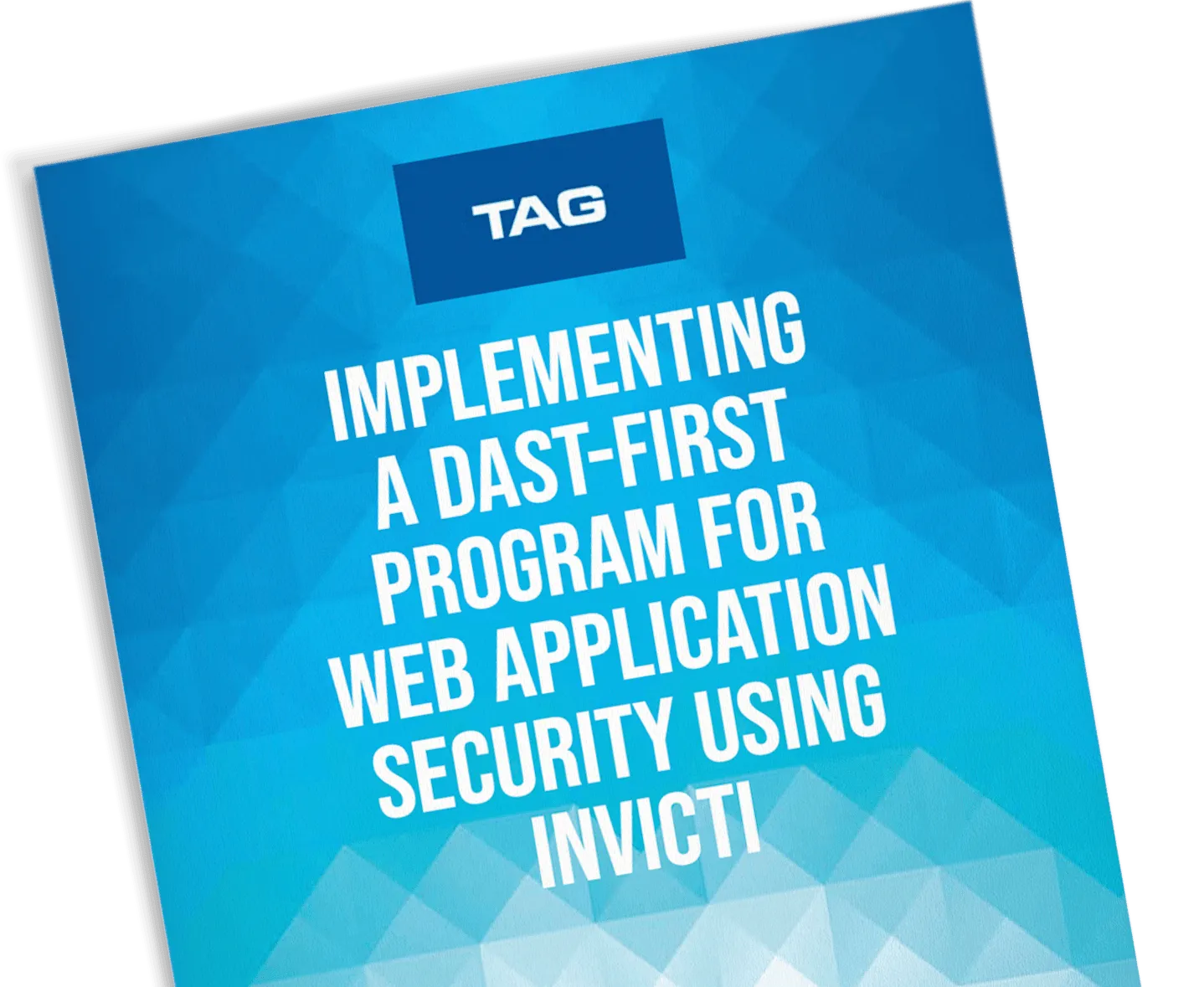API scanning and security testing: The core of modern application security
APIs power modern applications, but they’re also the fastest-growing attack surface. This article explores API scanning and security testing strategies, from automated API discovery and vulnerability detection to best practices for reducing risk and ensuring compliance.

Key takeaways
- APIs form a rapidly growing and often hidden attack surface that demands continuous discovery and testing.
- Automated API discovery and scanning are crucial but have historically required separate tools and struggled with inconsistent coverage and posture management.
- Integrating validated API testing into CI/CD pipelines improves DevSecOps efficiency and regulatory compliance.
- Invicti offers an integrated AppSec platform that combines API discovery and testing under one roof while also being designed for SDLC integration.
- Invicti’s DAST-first approach with integrated ASPM delivers unified, scalable API security and builds executive confidence in overall application risk management.
Introduction: Why API security testing is essential today
Every web or mobile experience, integration, and cloud service today depends on APIs to exchange data and enable business logic. As organizations modernize through microservices and third-party integrations, APIs now account for the majority of traffic across the internet.
This central role has also made APIs one of the fastest-growing attack vectors. Threat actors increasingly target APIs to gain direct access to sensitive data or to exploit logic flaws that traditional web security tools miss. Common weaknesses such as broken authentication, excessive data exposure, and insecure endpoints can lead to data leaks and full system compromise.
To protect this expanding attack surface, organizations must treat API scanning and security testing as integral parts of application security programs. Automated discovery, continuous scanning, and proof-based validation give teams the visibility they need to detect and remediate vulnerabilities before attackers can exploit them.
What is API scanning?
API scanning is the automated process of identifying, mapping, and testing APIs to find security weaknesses. It should provide visibility into all endpoints, whether documented or hidden, and perform active testing to uncover exploitable issues such as injection flaws, authentication errors, and configuration gaps.
Unlike traditional web application scanning, which focuses on browser-facing interfaces, API scanning targets machine-to-machine communication. APIs use structured data formats like JSON and XML, along with tokens or keys for authentication. These characteristics require scanners that can understand specifications (such as OpenAPI or Swagger), handle authorization schemes, parse API-specific protocols, and analyze logic beyond standard web requests.
APIs therefore need specialized testing that can discover endpoints dynamically and evaluate their behavior under real-world conditions. Without API-specific scanning, large parts of an organization’s attack surface remain invisible and unprotected.
What is API security testing?
API security testing encompasses all techniques used to evaluate the security of APIs throughout their lifecycle. This includes scanning, penetration testing, fuzzing, and configuration analysis. The goal is to identify vulnerabilities, misconfigurations, and design flaws that could expose data or compromise services.
Comprehensive API testing verifies that endpoints handle authentication, authorization, and data validation correctly. It also ensures that responses conform to expected schemas and do not leak sensitive information. Beyond direct risk reduction, API testing supports compliance with data protection and industry frameworks such as GDPR, PCI DSS, and HIPAA by generating evidence of secure handling of personal and financial data.
When performed continuously and integrated into development workflows, API security testing becomes a proactive defense that helps maintain regulatory alignment and operational trust.
Challenges in API scanning and testing
Securing APIs effectively requires more than just running scans on known endpoints – it demands visibility, accuracy, and adaptability across constantly changing environments. The following challenges highlight why traditional testing approaches often fall short in modern API ecosystems.
Evolving and complex ecosystems
Modern API environments are fluid by design. Microservices, containers, and rapid release cycles mean that APIs are constantly being added, modified, or deprecated. This creates a moving target for security teams, who must continuously track endpoints across hybrid and multi-cloud infrastructures. Without consistent discovery and scanning, new or altered APIs can slip through unnoticed, leaving exploitable gaps.
Hidden shadow and zombie APIs
Unmonitored or outdated APIs, often referred to as shadow or zombie APIs, pose a particularly dangerous risk. These endpoints might remain active long after they have been replaced or forgotten, bypassing standard security checks and exposing sensitive data. Because they are not included in documented inventories, they are also the least likely to be tested.
Scaling security in distributed environments
As organizations adopt multi-cloud strategies, scaling API testing becomes a major challenge. Different environments introduce varied authentication mechanisms, configurations, and communication protocols. Security tools must operate efficiently across this complexity while maintaining accuracy and minimizing false negatives.
Managing noise and false positives
Traditional API scanners often generate unverified or contextless alerts, leading to an overload of false positives. This wastes time and resources as teams manually verify vulnerabilities that may not be exploitable. Without validation, even well-intentioned security programs risk becoming reactive and inefficient, unable to focus on genuine threats.
Benefits of modern API scanning with Invicti
Invicti’s API scanning and testing solutions extend its proven DAST-first foundation to cover the entire application and API attack surface:
- Stateful API scanning: Context-aware testing improves coverage, prioritization, and compliance alignment across enterprise environments. Invicti’s stateful API scanning finds many classes of issues that would be invisible to traditional stateless scans.
- Proof-based scanning confirms exploitable vulnerabilities: Invicti can automatically validate many types of scan findings and provide a proof of exploit. Such confirmed issues can’t be false positives, allowing developers to prioritize and quickly deploy fixes to these exploitable flaws.
- Integrated API discovery and scanning: As one of the few solutions on the market today, Invicti combines multi-layered API discovery (including sensorless discovery) with advanced API security testing within a single platform.
- Unified coverage across web apps, APIs, and microservices: The same platform provides a consolidated solution for discovery, inventory, testing, and posture management across all types of web assets, reducing blind spots and inefficiencies caused by fragmented tools.
- Integration into CI/CD pipelines for continuous security: Invicti integrates seamlessly with build and deployment systems, providing automated scans with actionable results throughout the DevSecOps workflow.
The result is comprehensive API security that scales with the organization and delivers accurate data for both developers and security leaders.
Business outcomes of API scanning and testing
When executed with accuracy and consistency, API scanning and testing deliver measurable business and operational gains that go beyond technical security improvements. They enhance risk management, compliance, and collaboration while reinforcing overall confidence in an organization’s security posture.
Reducing risk and accelerating remediation
Effective API scanning directly reduces an organization’s attack surface. By identifying and validating real vulnerabilities, teams can focus remediation efforts where they matter most, shortening the time between detection and resolution. This results in a measurable drop in exploitable weaknesses across applications and services.
Strengthening compliance and audit readiness
Regular scanning and reporting provide verifiable evidence of due diligence for regulatory frameworks like GDPR, PCI DSS, and HIPAA. Accurate inventories and validated findings simplify audits, proving that data flows and security controls are managed responsibly and transparently.
Improving collaboration between teams
API testing integrated into DevSecOps workflows bridges the gap between developers and security specialists. When vulnerability data is trustworthy and automatically linked to development pipelines, collaboration becomes more fluid, and fixes are implemented faster without slowing down innovation.
Building executive confidence in security posture
Reliable, proof-based results give leadership a clear, factual view of risk across the organization. With validated insights rather than raw scan data, CISOs and CIOs can make informed decisions, communicate progress to the board, and demonstrate tangible improvement in application security maturity.
Conclusion: Integrate and consolidate API scanning to control risk
API scanning and security testing are no longer optional but have become the cornerstone of any mature application security strategy. As APIs continue to power every aspect of digital transformation and proliferate far faster than application frontends, only automated, validated, and continuous testing can keep pace with risk.
Your next steps:
- Discover how Invicti delivers proof-based API scanning and security testing to protect your applications.
- Get a demo to see Invicti API security in action.
- Build a continuous security process that combines discovery and testing for all your application frontends and APIs.
Frequently asked questions
FAQs about API scanning and security testing
API scanning identifies vulnerabilities in APIs (application programming interfaces) by automatically testing endpoints for security weaknesses.
APIs require specialized testing due to unique authentication, data handling, and integration risks that web app tools often miss. Testing an API with a typical web vulnerability scanner may produce a handful of generic findings, but most API-specific vulnerabilities won’t be found.
It ensures continuous visibility, detects risks faster, and reduces reliance on manual testing that is too slow and limited to keep up with the growth of APIs.
It creates accurate inventories, validates vulnerabilities, and provides audit-ready reporting for regulations like PCI DSS, GDPR, and HIPAA. Because APIs are a major part of the application attack surface, demonstrating visibility, testing, and management capabilities for API security is essential for any security audit.
Invicti is the only solution that combines API discovery with stateful and stateless scanning within a single product. It also delivers proof-based scanning and provides CI/CD integration, ensuring accurate results and scalable API security.



